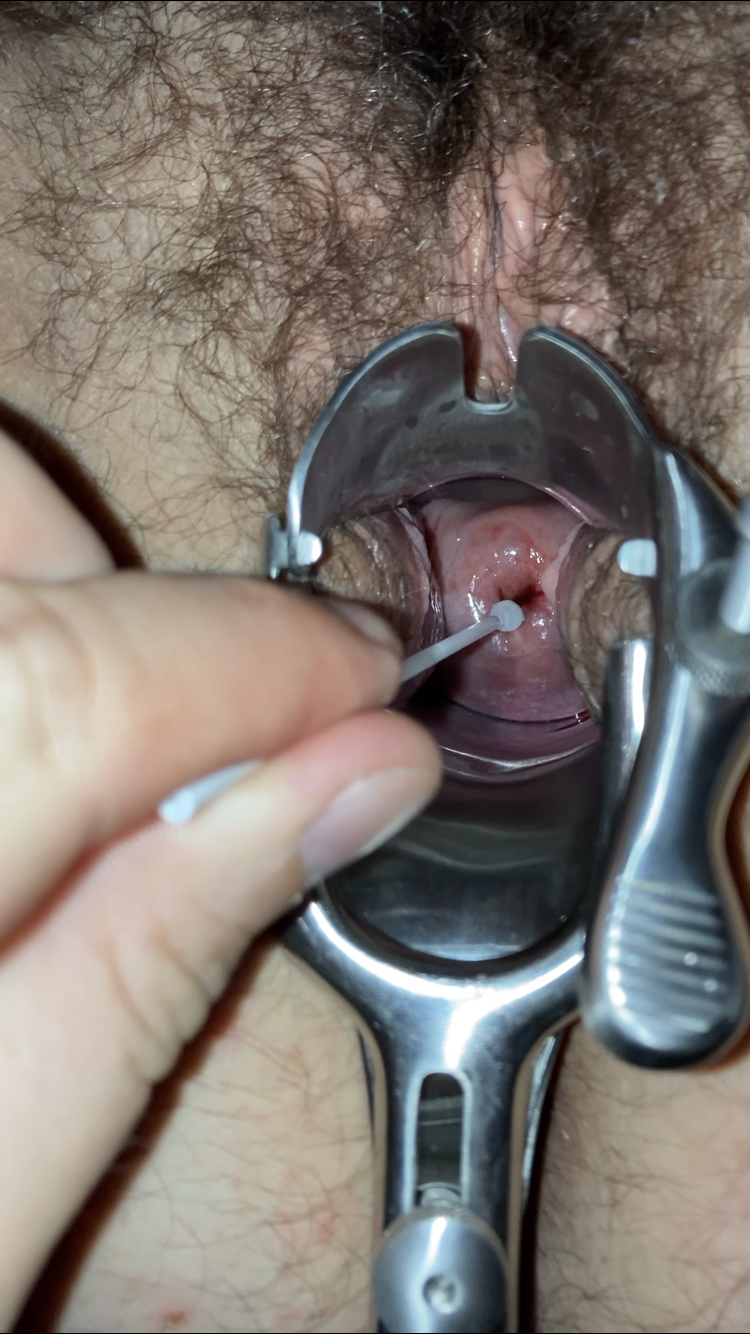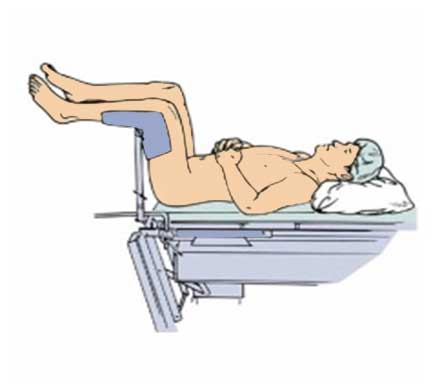|
Colposcopy
Colposcopy ( + ''skopos'' 'look at') is a medical diagnostic procedure to visually examine the cervix as well as the vagina and vulva using a colposcope. The main goal of colposcopy is to prevent cervical cancer by detecting and treating precancerous lesions early. Human Papillomavirus (HPV) is a common infection and the underlying cause for most cervical cancers. Smoking also makes developing cervical abnormalities more likely. Other reasons for a patient to have a colposcopy include assessment of diethylstilbestrol (DES) exposure in utero, immunosuppression, abnormal appearance of the cervix or as a part of a sexual assault forensic examination. Colposcopy is done using a colposcope, which provides a magnified and illuminated view of the areas, allowing the colposcopist to visually distinguish normal from abnormal appearing tissue, such as damaged or abnormal changes in the tissue (lesions), and take directed biopsies for further pathological examination if needed. Colposc ... [...More Info...] [...Related Items...] OR: [Wikipedia] [Google] [Baidu] |
Cervical Cancer
Cervical cancer is a cancer arising from the cervix or in any layer of the wall of the cervix. It is due to the abnormal growth of cells that can invade or spread to other parts of the body. Early on, typically no symptoms are seen. Later symptoms may include abnormal vaginal bleeding, pelvic pain or pain during sexual intercourse. While bleeding after sex may not be serious, it may also indicate the presence of cervical cancer. Virtually all cervical cancer cases (99%) are linked to genital human papillomavirus infection (HPV); most who have had HPV infections, however, do not develop cervical cancer. HPV 16 and 18 strains are responsible for approximately 70% of cervical cancer cases globally and nearly 50% of high grade cervical pre-cancers. Minor risk factors include smoking, a weak immune system, birth control pills, starting sex at a young age, and having many sexual partners. Genetic factors also contribute to cervical cancer risk. Cervical cancer typically develo ... [...More Info...] [...Related Items...] OR: [Wikipedia] [Google] [Baidu] |
Pap Test
The Papanicolaou test (abbreviated as Pap test, also known as Pap smear (AE), cervical smear (BE), cervical screening (BE), or smear test (BE)) is a method of cervical screening used to detect potentially precancerous and cancerous processes in the cervix (opening of the uterus or womb) or, more rarely, anus (in both men and women). Abnormal findings are often followed up by more sensitive diagnostic procedures and, if warranted, interventions that aim to prevent progression to cervical cancer. The test was independently invented in the 1920s by the Greek physician Georgios Papanikolaou and named after him. A simplified version of the test was introduced by the Canadian obstetrician Anna Marion Hilliard in 1957. A Pap smear is performed by opening the vagina with a speculum and collecting cells at the outer opening of the cervix at the transformation zone (where the outer squamous cervical cells meet the inner glandular endocervical cells), using an Ayre spatula or a ... [...More Info...] [...Related Items...] OR: [Wikipedia] [Google] [Baidu] |
Eduard Wirths
Eduard Wirths (4 September 1909 – 20 September 1945) was the chief SS doctor () at the Auschwitz concentration camp from September 1942 to January 1945. Thus, Wirths had formal responsibility for everything undertaken by the nearly twenty SS doctors (including Josef Mengele, Horst Schumann and Carl Clauberg) who worked in the medical sections of Auschwitz between 1942 and 1945. Early life Eduard Wirths was born in Geroldshausen near Würzburg, Bavaria into a Catholic family with democratic Socialist leanings. His father served as a medical corpsman in the First World War and according to Robert Jay Lifton had emerged from the war "...in a depressed state with pacifist leanings, which were undoubtedly expressed in his (as one son put it) 'making doctors of us all...'" Wirth's younger brother, Helmut, became a notable gynecologist (who later went to Auschwitz to visit his brother to participate in cancer experiments but said that he left after only a few days on his brother ... [...More Info...] [...Related Items...] OR: [Wikipedia] [Google] [Baidu] |
Squamous Intraepithelial Lesion
A squamous intraepithelial lesion (SIL) is an abnormal growth of squamous cells on the surface of the cervix; normal squamous cells make up the normal epithelium of the cervix. This lesion can progress to cervical cancer and can be diagnosed using a Pap smear or a colposcopy. It can be treated by using methods that remove the abnormal cells, allowing normal cells to grow in their place. In the Bethesda system, the cytology Cell biology (also cellular biology or cytology) is a branch of biology that studies the structure, function, and behavior of cells. All living organisms are made of cells. A cell is the basic unit of life that is responsible for the living an ... can be graded as LSIL (low-grade squamous intraepithelial lesion) or HSIL (high-grade squamous intraepithelial lesion). References Papillomavirus-associated diseases {{pathology-stub Cervical cancer ... [...More Info...] [...Related Items...] OR: [Wikipedia] [Google] [Baidu] |
Speculum (medical)
A speculum (Latin for 'mirror'; : specula or speculums) is a medical tool for investigating body orifices, with a form dependent on the orifice for which it is designed. In old texts, the speculum may also be referred to as a diopter or dioptra. Like an endoscope, a speculum allows a view inside the body; endoscopes, however, tend to have optics while a speculum is intended for direct vision. History Vaginal and anal specula were used by the Ancient Greece, ancient Greeks and Ancient Rome, Romans, and speculum Artifact (archaeology), artifacts have been found in Pompeii. The modern vaginal speculum, developed by J. Marion Sims, consists of a hollow cylinder with a rounded end that is divided into two hinged parts, somewhat like the beak of a duck. This speculum is inserted into the vagina to dilate it for examination of the vagina and cervix. A more modern vaginal speculum was developed by Marie Boivin (1773–1841), a French midwife, inventor, and obstetrics writer who has be ... [...More Info...] [...Related Items...] OR: [Wikipedia] [Google] [Baidu] |
Lithotomy Position
The lithotomy position is a common position for surgical procedures and medical examinations involving the pelvis and lower abdomen, as well as a common position for childbirth in Western nations. The lithotomy position involves the positioning of an individual's feet above or at the same level as the hips (often in stirrups), with the perineum positioned at the edge of an examination table. References to the position have been found in some of the oldest known medical documents including versions of the Hippocratic oath (see lithotomy); the position is named after the ancient surgical procedure for removing kidney stones and bladder stones via the perineum. The position is perhaps most recognizable as the 'often used' position for childbirth: the patient is laid on the back with knees bent, positioned above the hips, and spread apart through the use of stirrups. The position is frequently used and has many obvious benefits from the doctor's perspective. Most notably the position p ... [...More Info...] [...Related Items...] OR: [Wikipedia] [Google] [Baidu] |
Anatomical Terms Of Location
Standard anatomical terms of location are used to describe unambiguously the anatomy of humans and other animals. The terms, typically derived from Latin or Greek roots, describe something in its standard anatomical position. This position provides a definition of what is at the front ("anterior"), behind ("posterior") and so on. As part of defining and describing terms, the body is described through the use of anatomical planes and axes. The meaning of terms that are used can change depending on whether a vertebrate is a biped or a quadruped, due to the difference in the neuraxis, or if an invertebrate is a non-bilaterian. A non-bilaterian has no anterior or posterior surface for example but can still have a descriptor used such as proximal or distal in relation to a body part that is nearest to, or furthest from its middle. International organisations have determined vocabularies that are often used as standards for subdisciplines of anatomy. For example, '' Termi ... [...More Info...] [...Related Items...] OR: [Wikipedia] [Google] [Baidu] |
Stirrup (other)
A stirrup is a metal loop supporting the foot, fastened to a saddle on a riding animal. Stirrup may also refer to: * Baseball stirrups, a type of socks worn by baseball players * the braces supporting the lithotomy position utilised in medical examinations such as a pelvic exam * A clamp (tool) or support in the shape of a stirrup * Rebar bent in a loop and used to reinforce concrete * The stapes, a bone of the ear resembling a stirrup * Stirrup pants, a form of leggings with a strap beneath the arch of the foot See also * * * Jock Stirrup, nickname of Britain's Air Chief Marshal Sir Graham Eric Stirrup * Frank Stirrup, English rugby league footballer of the 1950s and 1960s * Stirrup cup * Stirrup jar, a two-handled amphora whose opposing handles connect the aperture to the sides of the vessel * Stirrup shell, a species of bivalve * Stirrup spout vessel, a type of ceramic vessel used by indigenous cultures of South America * Stir-up Sunday Stir-up Sunday is an inform ... [...More Info...] [...Related Items...] OR: [Wikipedia] [Google] [Baidu] |
Pregnancy
Pregnancy is the time during which one or more offspring gestation, gestates inside a woman's uterus. A multiple birth, multiple pregnancy involves more than one offspring, such as with twins. Conception (biology), Conception usually occurs following sexual intercourse, vaginal intercourse, but can also occur through assisted reproductive technology procedures. A pregnancy may end in a Live birth (human), live birth, a miscarriage, an Abortion#Induced, induced abortion, or a stillbirth. Childbirth typically occurs around 40 weeks from the start of the Menstruation#Onset and frequency, last menstrual period (LMP), a span known as the Gestational age (obstetrics), ''gestational age''; this is just over nine months. Counting by Human fertilization#Fertilization age, ''fertilization age'', the length is about 38 weeks. Implantation (embryology), Implantation occurs on average 8–9 days after Human fertilization, fertilization. An ''embryo'' is the term for the deve ... [...More Info...] [...Related Items...] OR: [Wikipedia] [Google] [Baidu] |
Transformation Zone Types
Transformation may refer to: Science and mathematics In biology and medicine * Metamorphosis, the biological process of changing physical form after birth or hatching * Malignant transformation, the process of cells becoming cancerous * Transformation (genetics), genetic alteration of a cell by DNA uptake In mathematics * Transformation (function), concerning functions from sets to themselves. For functions in the broader sense, see function (mathematics). **Affine transformation, in geometry **Linear transformation between modules in linear algebra. Also called a linear map. ***Transformation matrix which represent linear maps in linear algebra. *Integral transform, between a function in one domain to a function in another * Natural transformation between functors in category theory. * Unitary transformation, between two Hilbert spaces * Geometric transformation, between sets of points in geometry **Infinitesimal transformation, a limiting case of a geometrical transformatio ... [...More Info...] [...Related Items...] OR: [Wikipedia] [Google] [Baidu] |




